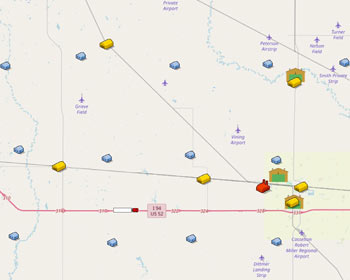MPC
Improved Models Provide More Detail for Transportation Planning
Posted: Feb 1, 2019
 MPC researchers found that agent-based simulation (ABS) for modeling agricultural transportation demand provides a greater level of detail for transportation planning efforts. This level of detail enhances the ability to accurately project investment needs and target infrastructure investments.
MPC researchers found that agent-based simulation (ABS) for modeling agricultural transportation demand provides a greater level of detail for transportation planning efforts. This level of detail enhances the ability to accurately project investment needs and target infrastructure investments.
North Dakota road and bridge infrastructure is critical to support energy development and the agricultural industry. Due to the nature of infrastructure investment, transportation planning requires long-term projection and large investments of public dollars. Consequently, statewide freight demand modeling is an important tool for planning effective and efficient investment. In this study, researchers used ABS for modeling agricultural transportation demand. With this model, geographic information systems were utilized to collect and analyze remote sensing of agricultural crops. The researchers reviewed ABS modeling in freight and public transportation planning to fill the gap between other modeling efforts. Researchers found that the ABS model is capable of handling sophisticated decision-making processes, such as grain pricing strategies, transportation costs, holding costs, and advanced logistics choice model and the behavioral selection process.
EunSu Lee, Ph.D.
New Jersey City University
Application of a Multi-Agent System with the Large-Scale Agent-Based Model for Freight Demand Modeling
MPC-18-370

